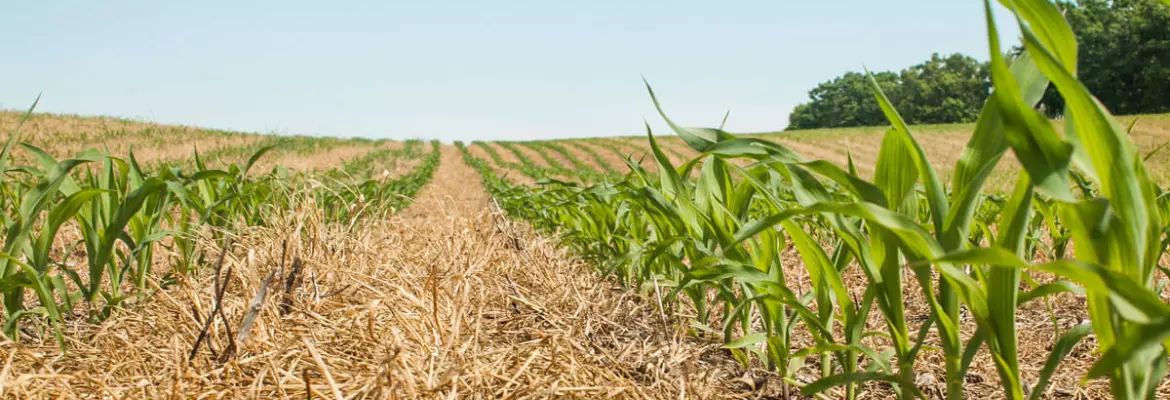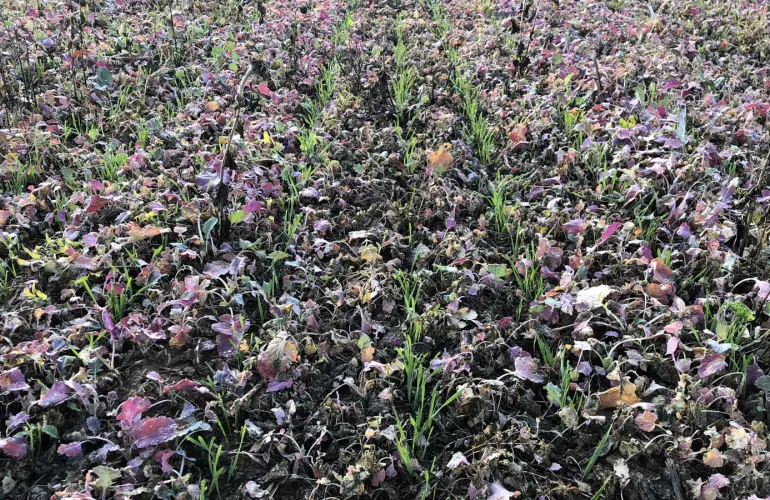
It is possible to seed without ploughing for maize and wheat crops. However, a few precautions need to be taken with these crops which are fairly demanding in terms of soil structure. Direct drilling can be carried out if the soil is not compacted. Care must also be taken to manage residues to ensure good soil/seed contact.
Ensure good soil structure for no-plough seeding
Direct drilling must be carried out on non-compacted soil. Check the clods in the top 10cm. There should be very few. At a depth of between 10-30cm, clod diameter should not be more than 15cm. On a level surface, you can seed directly without any prior tillage. It should be noted that soil packing at a depth of 25 m is very detrimental to maize.
Wetter soils: reactivity is key for seeding in good conditions
With winter grain crops, seeding days are reduced or can be delayed. Keeping the cover crop in place reduces water evaporation. This benefits spring seeds that are drilled in warmer soils. To ensure optimum seeding conditions, the field must be well drained to avoid plough pans or smoothing. It is possible to postpone seeding, but it comes with a risk, as drought during flowering is ever more frequent. In winter, the soil is more humid for grain crops like wheat. Therefore, patience and responsiveness are required in order to sow in the right conditions, without leaving it too late.
Seeding in conservation agriculture: managing densities and choosing the right variety
It is generally advisable to opt for vigorous varieties to improve the chances of emergence. This is especially true when using a no-plough technique for maize whose root development is slower at the beginning, and due to lower mineralization levels. It is also advisable to switch to spot fertilisation in order to deliver the fertiliser as close to the seed as possible when needed. When using no-plough techniques for maize seeding, row spacing can be reduced to 37.5cm instead of the usual 75cm, while maintaining the same density per hectare. There is less competition on the seeding row. The density should always be adapted to the variety, its yield potential, and whether it is early or late (seeding date). However, it is possible use 5 to 10% more seed than with conventional seeding, or even 15 to 20% more when seeding at 37.5cm spacings.
Cover crops and straw: how to work them before drilling
A suitable environment is necessary for seeds to germinate quickly when using a no-plough technique. Optimum seed/soil contact is required. Therefore, you should use a seed drill with an effective trash eradicator to avoid getting residues in the seedbed. Managing the cover crop will depend on its state: living intercrop, dead residues (stubble), intact or shredded. Before direct drilling wheat, the previous plant cover is often treated with a weedkiller. After maize, shredding the stalks reduces residues and the risk of pests and diseases, whether working with a direct drilling or min-till (minimum cultivation) method.

Sources:
- https://agriculture-de-conservation.com/Adaptation-au-non-labour-3-points.html
- https://aveyron.chambre-agriculture.fr/fileadmin/user_upload/National/FAL_commun/publications/Occitanie/Productions_techniques/GTI_173_20-23-ca12-2017.pdf
- https://occitanie.chambre-agriculture.fr/fileadmin/user_upload/National/FAL_commun/publications/Occitanie/synt_thema_v5-1.pdf
